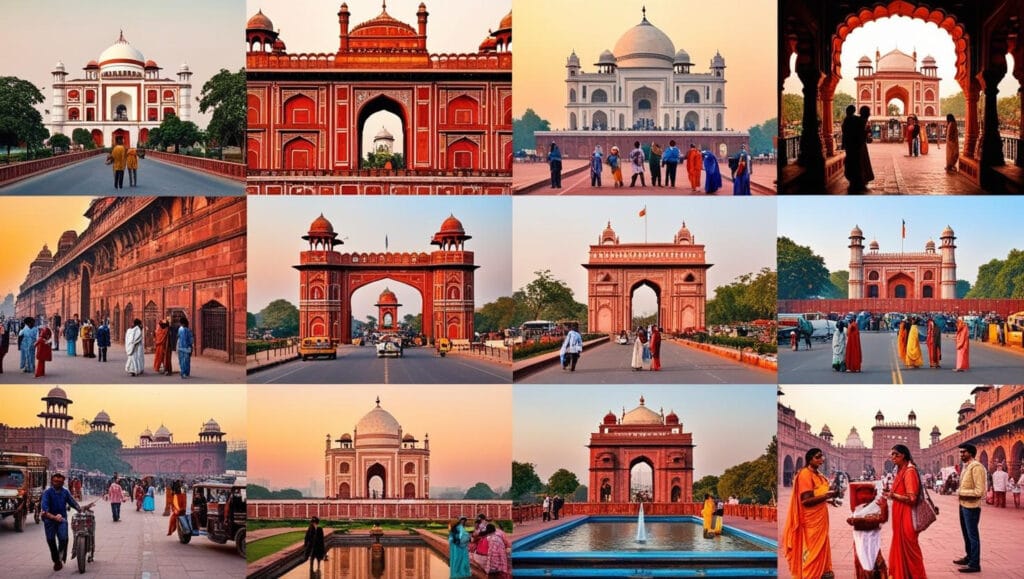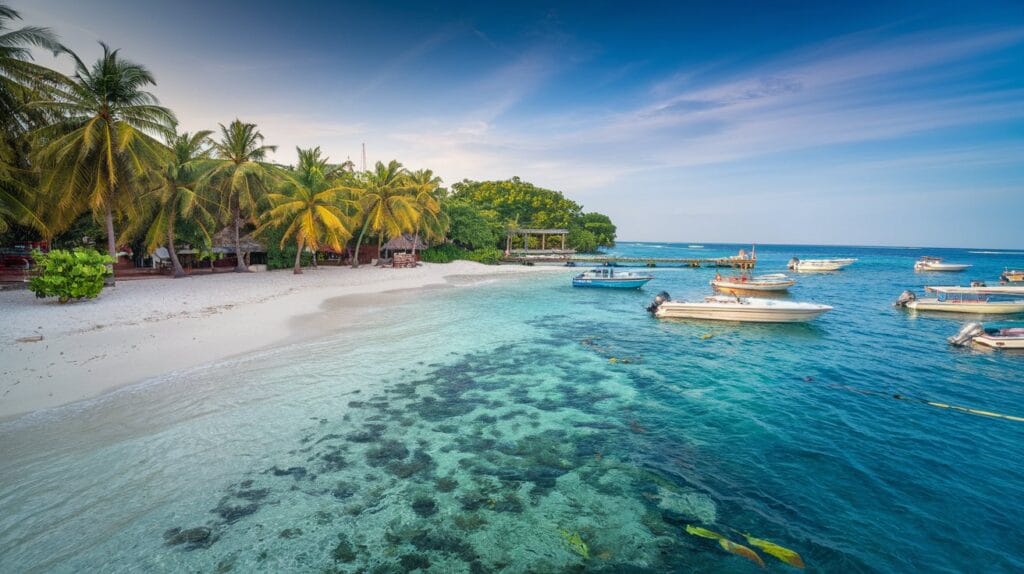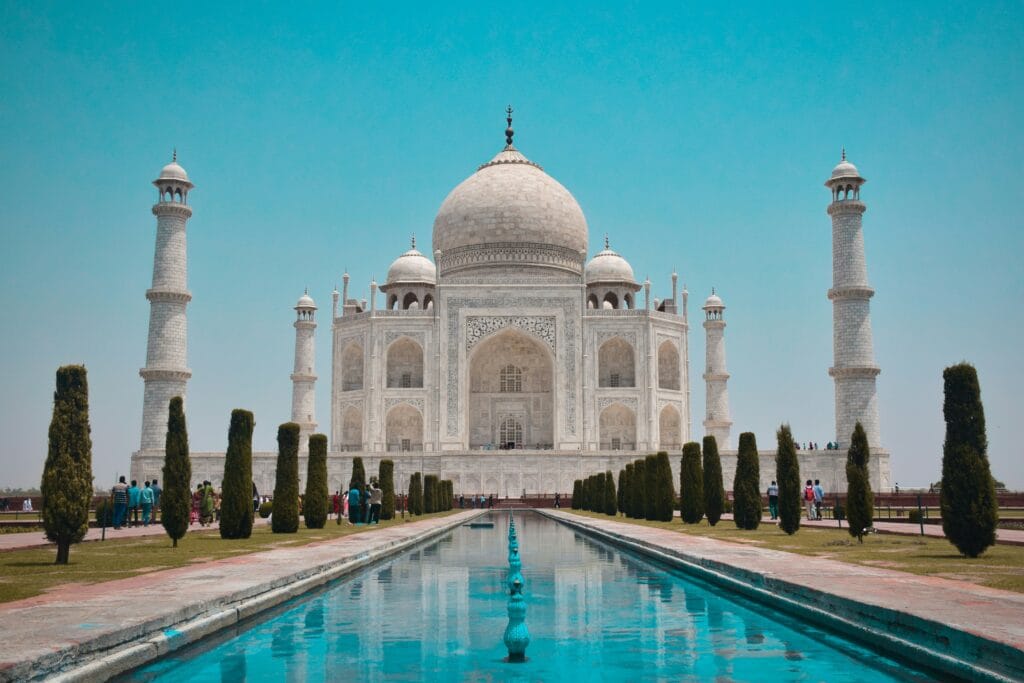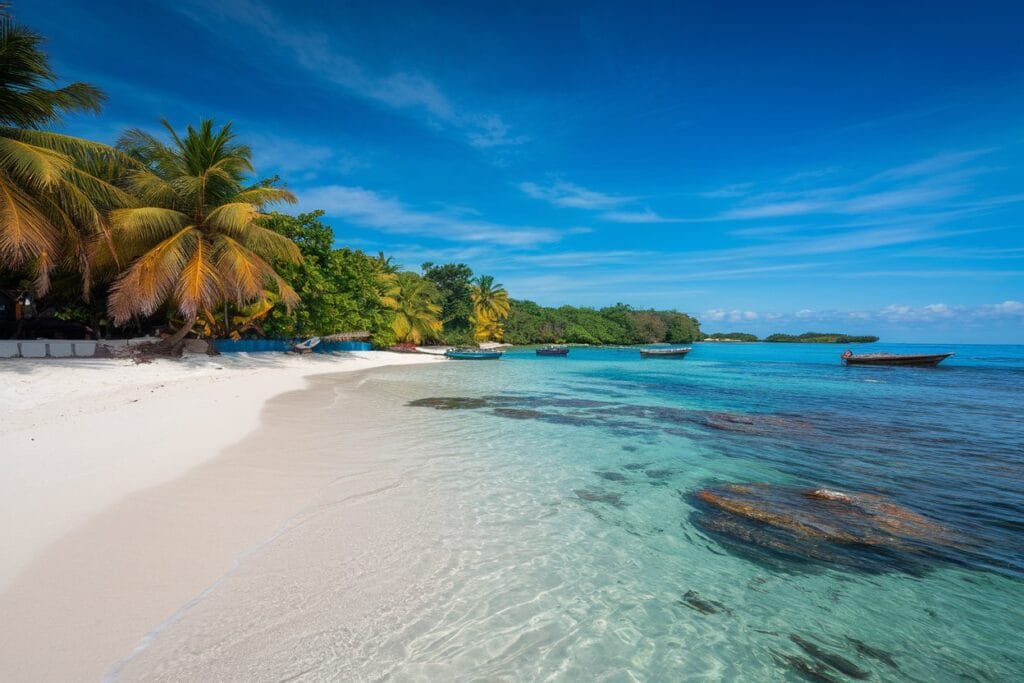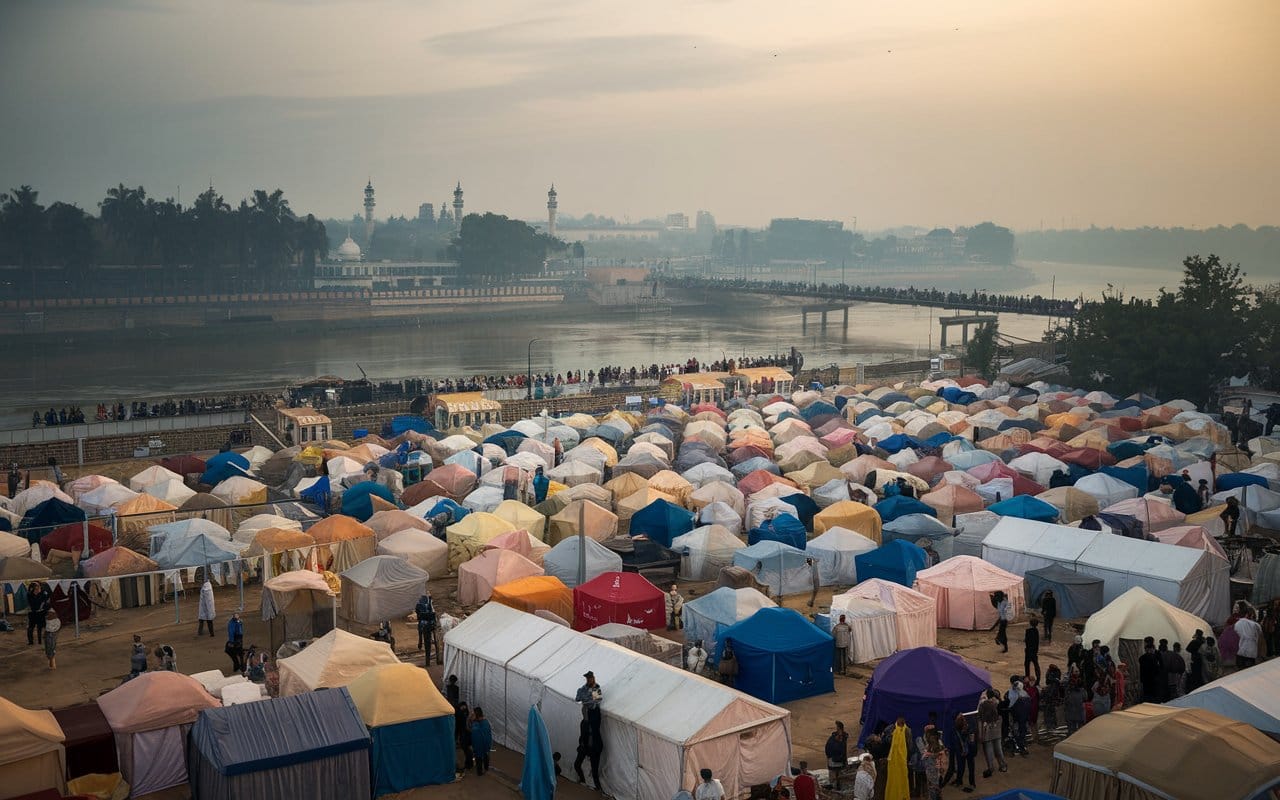
Maha Kumbh
Introduction to the Maha Kumbh Mela 2025
The Maha Kumbh Mela is one of the most revered and largest religious gatherings in the world, and the 2025 event promises to be an awe-inspiring experience. Held once every 12 years, the Maha Kumbh Mela is celebrated with unmatched enthusiasm, bringing together millions of pilgrims, saints, and tourists from across the globe. This grand spiritual congregation will take place in Prayagraj, a city that holds immense historical and cultural significance in India.
The Maha Kumbh Mela is a festival that transcends religion and region, embodying the true spirit of unity and devotion. The 2025 edition is expected to witness an unparalleled turnout, with devotees coming to take the holy dip at the confluence of the Ganga, Yamuna, and the mythical Saraswati rivers. This sacred act is believed to cleanse one’s soul and free it from the cycle of birth and rebirth, making the Kumbh Mela a transformative experience for those who participate.
Prayagraj, formerly known as Allahabad, has been a pivotal center for spirituality and learning for centuries. Its role as the host city adds to the spiritual gravitas of the Maha Kumbh Mela. With extensive preparations underway to accommodate the influx of pilgrims, Prayagraj is set to provide a safe and enriching environment for all attendees.
Whether you are a first-time visitor or a seasoned participant, the Maha Kumbh Mela 2025 offers a unique opportunity to immerse yourself in India’s rich spiritual heritage. From the mesmerizing Ganga Aarti to the vibrant cultural performances, this event is a celebration of faith, devotion, and community on a grand scale.
Stay tuned for more detailed sections as we explore the spiritual significance, logistical details, and unique experiences that the Maha Kumbh Mela 2025 has to offer.
The Spiritual Significance of Kumbh Mela
The Maha Kumbh Mela holds profound spiritual significance for millions of devotees who travel to participate in this sacred event. Rooted in ancient Hindu traditions, the festival is deeply connected to the quest for spiritual purification, enlightenment, and liberation. The act of gathering at the confluence of the Ganga, Yamuna, and the mythical Saraswati rivers in Prayagraj reflects the harmony between physical pilgrimage and inner awakening.
The origins of the Kumbh Mela are traced back to Hindu mythology, specifically the story of the Samudra Manthan, or the churning of the ocean of milk by the gods (Devas) and demons (Asuras). According to the legend, the nectar of immortality (Amrit) emerged from the churning, and a divine struggle ensued for its possession. In this celestial battle, drops of the Amrit fell at four locations on Earth: Prayagraj, Haridwar, Ujjain, and Nashik. These places became sanctified, and the Kumbh Mela is celebrated at each of them in a cyclical manner.
The central spiritual ritual of the Kumbh Mela is the Shahi Snan, or the royal bath, taken at the Sangam, the holy confluence of the rivers. Devotees believe that immersing themselves in the sacred waters during the auspicious times of the Maha Kumbh Mela washes away sins and bestows Moksha, or liberation from the cycle of birth and rebirth. For ascetics, saints, and householders alike, this ritual symbolizes a deeper connection with the divine and a step towards self-realization.
The Kumbh Mela also serves as a spiritual forum, bringing together various sects of Hinduism, including the Vaishnavas, Shaivas, and Shaktas. Saints and sages from diverse traditions gather to share their wisdom, engage in debates, and perform rituals. For devotees, this is an unparalleled opportunity to receive blessings, guidance, and spiritual knowledge from these revered figures.
In addition to the religious aspects, the Maha Kumbh Mela emphasizes the values of unity, compassion, and service. The festival is a reminder of the interconnectedness of all beings and the importance of living a life guided by faith and virtue. Pilgrims who attend the Kumbh Mela return home not only with a sense of spiritual renewal but also with a strengthened commitment to these values.
The Maha Kumbh Mela 2025 in Prayagraj is expected to embody these timeless spiritual principles while offering an experience that transcends the boundaries of religion, caste, and nationality. It is a testament to the enduring relevance of ancient traditions in the modern world, inviting all to partake in its spiritual legacy.
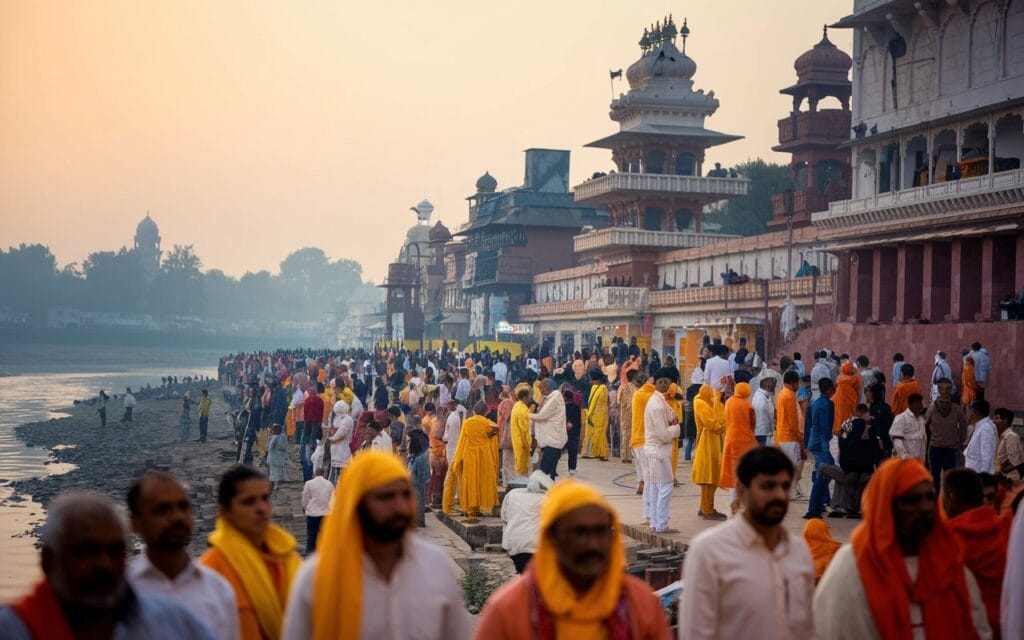
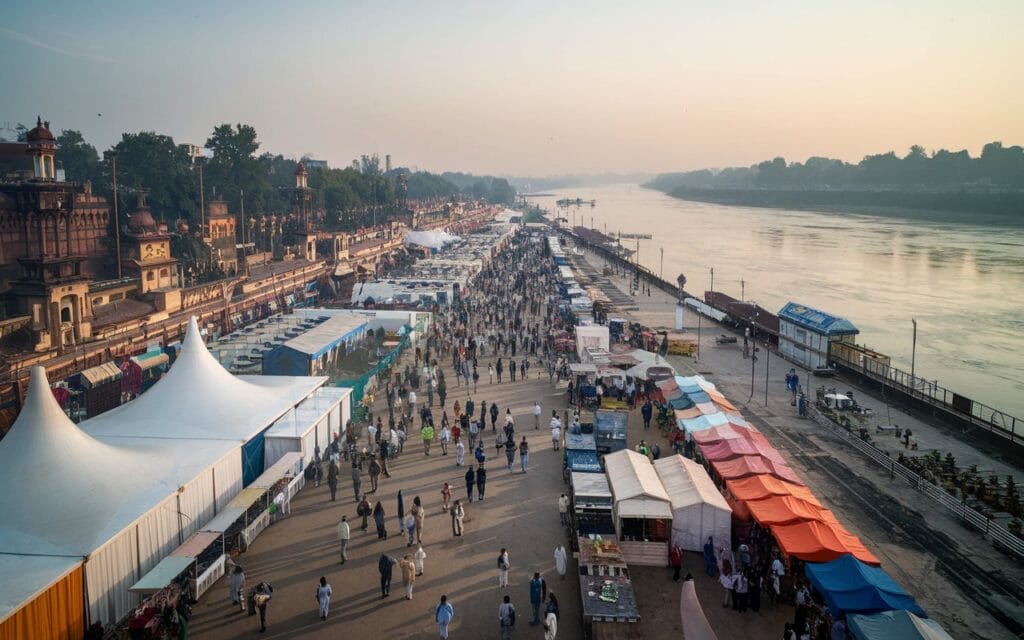
Why Prayagraj is the Perfect Host for Maha Kumbh Mela
Prayagraj, a city steeped in history and spirituality, is undoubtedly the perfect host for the Maha Kumbh Mela. Formerly known as Allahabad, this ancient city is situated at the confluence of three sacred rivers: the Ganga, Yamuna, and the mythical Saraswati. This unique geographic and spiritual location, known as the Sangam, has been revered as a holy site for centuries, making Prayagraj the ideal venue for this grand event.
Historical and Mythological Importance
Prayagraj has been a cornerstone of Indian civilization, with references to its significance found in ancient texts like the Vedas and Puranas. The city is believed to have been established by Lord Brahma, the creator in Hindu mythology, who performed a sacrifice (Prayag) here, giving the city its name. Over millennia, Prayagraj has been the epicenter of spiritual, cultural, and educational activities, attracting saints, scholars, and seekers from all over the world.
The city’s connection to the Maha Kumbh Mela is deeply rooted in Hindu mythology. According to legend, the drops of Amrit (nectar of immortality) spilled at Prayagraj during the celestial battle after the Samudra Manthan. This event sanctified the city, making it one of the four sacred sites for the Kumbh Mela. Hosting the Maha Kumbh Mela in Prayagraj is a continuation of this divine legacy.
The Magnificence of the Sangam
The Sangam is the heart of the Maha Kumbh Mela in Prayagraj. The confluence of the Ganga, Yamuna, and Saraswati rivers is not only a geographical wonder but also a spiritual phenomenon. The waters of the Sangam are believed to possess purifying properties, attracting millions of pilgrims to take a holy dip. This act of faith is considered a once-in-a-lifetime opportunity to cleanse one’s soul and attain Moksha (liberation).
The expansive ghats and the tranquil flow of the rivers provide a serene and sacred ambiance, making Prayagraj a fitting host for an event of such magnitude. The city’s natural beauty and spiritual aura enhance the experience for pilgrims and visitors alike.
Infrastructure and Accessibility
Prayagraj’s modern infrastructure and accessibility further establish its suitability as the host city for the Maha Kumbh Mela. The city has undergone significant development in recent years, with improved transportation, accommodations, and amenities to cater to the millions of devotees expected to attend.
The city’s well-connected transportation network, including railways, roadways, and airways, ensures that pilgrims from across India and the globe can reach Prayagraj with ease. The Prayagraj Junction railway station and nearby airports provide seamless connectivity, while the city’s roads are equipped to handle the large influx of vehicles during the event.
Moreover, the state and central governments, in collaboration with local authorities, have made extensive arrangements to manage the event. From setting up temporary accommodations to ensuring round-the-clock medical and security services, Prayagraj’s infrastructure is designed to provide a safe and comfortable experience for all attendees.
Cultural and Spiritual Resonance
Prayagraj is a melting pot of cultures and spiritual traditions, making it an ideal setting for the Maha Kumbh Mela. The city is home to numerous temples, ashrams, and historical landmarks that add to its spiritual charm. Visitors can explore the rich heritage of Prayagraj by visiting iconic sites such as the Anand Bhavan, Allahabad Fort, and the Akshaya Vat (immortal banyan tree).
During the Maha Kumbh Mela, Prayagraj becomes a vibrant hub of spiritual and cultural activities. The event attracts saints, sages, and spiritual leaders from various traditions, who gather to share their wisdom and bless the devotees. The city’s inclusive and welcoming spirit resonates with the essence of the Maha Kumbh Mela, creating an atmosphere of unity and devotion.
Community and Volunteer Efforts
The people of Prayagraj play a pivotal role in making the Maha Kumbh Mela a success. The local community, along with thousands of volunteers, works tirelessly to ensure that the event runs smoothly. Their dedication and hospitality reflect the city’s commitment to upholding the traditions and values of the Maha Kumbh Mela.
From setting up food stalls offering free meals (Langars) to assisting pilgrims with directions and services, the people of Prayagraj embody the spirit of selfless service. Their efforts contribute significantly to the event’s success, making Prayagraj a city that truly embraces the Maha Kumbh Mela’s grandeur.
Conclusion
Prayagraj’s unique blend of historical significance, spiritual sanctity, and modern infrastructure makes it the perfect host for the Maha Kumbh Mela. As the city prepares to welcome millions of pilgrims in 2025, it continues to uphold its legacy as a beacon of faith, unity, and devotion. The Maha Kumbh Mela 2025 in Prayagraj promises to be an unforgettable experience, offering a harmonious blend of tradition and modernity in one of the most sacred locations on Earth.
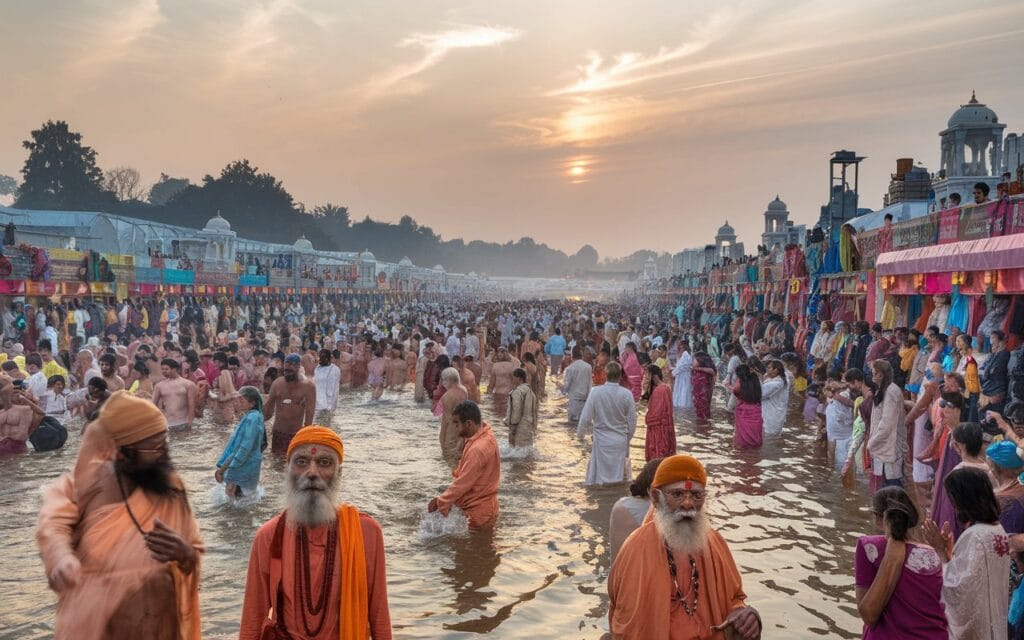
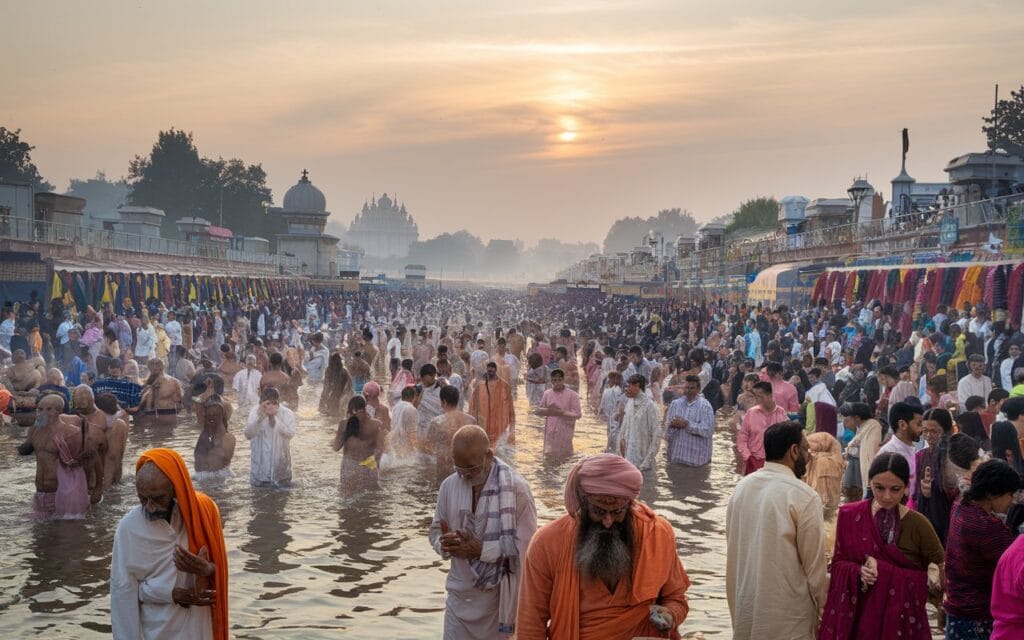
Key Dates and Schedule of Maha Kumbh Mela 2025
The Maha Kumbh Mela 2025 in Prayagraj is one of the most anticipated religious gatherings in India. This monumental event is steeped in spirituality, culture, and tradition, attracting millions of devotees from across the globe. Understanding the key dates and schedule is essential for anyone planning to experience the grandeur of this sacred festival.
Overview of the Schedule
The Maha Kumbh Mela 2025 will commence on January 14, 2025, with the auspicious occasion of Makar Sankranti, marking the beginning of the holy baths. The festival will continue for approximately 48 days, culminating on March 4, 2025, on the day of Mahashivratri. These dates are determined based on astrological calculations and the alignment of celestial bodies, which hold immense significance in Hindu tradition.
Key Bathing Dates
Bathing in the sacred confluence of the Ganga, Yamuna, and the mythical Saraswati rivers is the central ritual of the Maha Kumbh Mela. The following are the key bathing dates for 2025:
- Makar Sankranti (January 14, 2025): The first Shahi Snan (royal bath) marks the official start of the festival.
- Paush Purnima (January 25, 2025): Considered highly auspicious for spiritual cleansing.
- Mauni Amavasya (February 9, 2025): The main bathing day, attracting the largest number of pilgrims.
- Basant Panchami (February 14, 2025): A significant day for worship and bathing.
- Maghi Purnima (February 24, 2025): Another important bathing day.
- Mahashivratri (March 4, 2025): The final bathing day, symbolizing spiritual awakening and devotion to Lord Shiva.
Daily Activities and Rituals
Apart from the key bathing dates, the Maha Kumbh Mela hosts a variety of activities daily:
- Morning Prayers: Devotees begin their day with prayers and hymns along the riverbanks.
- Discourses by Spiritual Leaders: Renowned saints and gurus hold spiritual discourses to enlighten attendees.
- Cultural Performances: Traditional music, dance, and drama add a festive vibe to the event.
- Yagnas and Pujas: Special rituals and fire offerings are performed to seek blessings.
Planning Your Visit
To make the most of your visit to the Maha Kumbh Mela, plan your trip around the key dates. Arrive early on significant days to secure a spot for the holy bath and participate in rituals. It’s advisable to check the official schedule and announcements for any updates or changes.
The Maha Kumbh Mela 2025 promises an unforgettable spiritual journey. With its meticulously planned schedule, it offers a harmonious blend of devotion, culture, and unity, making Prayagraj the epicenter of divine energy during this sacred period.
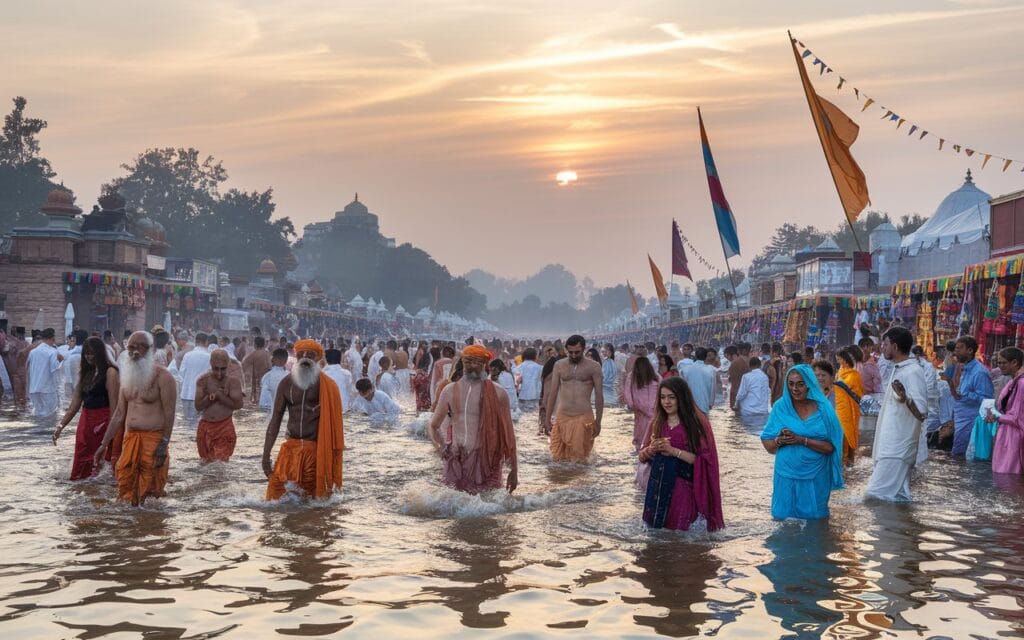
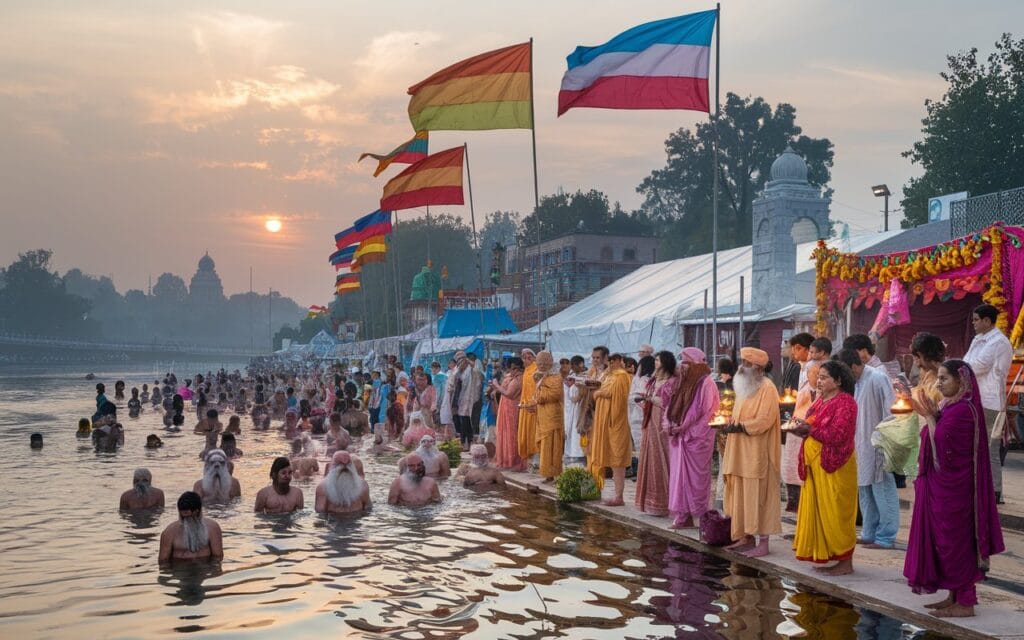
Major Attractions During the Event
Introduction: Overview of Maha Kumbh Mela 2025 Prayagraj
The Maha Kumbh Mela 2025 Prayagraj is one of the most significant and spiritual events in India, attracting millions of devotees and visitors from around the globe. It is a grand gathering that occurs once every twelve years at the confluence of the Ganga, Yamuna, and Sarasvati rivers, symbolizing unity, spirituality, and the power of rituals. During the Maha Kumbh Mela, various religious, cultural, and spiritual activities take place, offering a unique experience for those who partake in the celebration.
In this blog post, we will dive deep into the major attractions during the Maha Kumbh Mela 2025 Prayagraj, highlighting everything that makes this event an extraordinary occasion. From divine dips in the sacred rivers to mesmerizing rituals, religious discourses, and cultural performances, we will cover the essential aspects that visitors can look forward to.
1. The Sacred Dip (Snan) at Triveni Sangam
One of the most vital and profound attractions of the Maha Kumbh Mela is the ritual of taking a holy dip at the Triveni Sangam, the confluence of three sacred rivers: the Ganga, Yamuna, and Sarasvati. According to Hindu mythology, it is believed that bathing at this auspicious spot cleanses the soul, removes sins, and grants divine blessings. Pilgrims from all over the world come to Prayagraj to immerse themselves in these holy waters.
The ritual bath is an essential part of the experience at the Maha Kumbh Mela. During this event, multiple “snan” dates are marked on the Mela calendar, with each date considered auspicious for different reasons. The highlight is the Maha Snan, which occurs on the most significant day of the Mela when millions gather at the Sangam for this divine bath.
2. Spiritual Discourses and Satsangs
At the Maha Kumbh Mela 2025 Prayagraj, you can find a variety of spiritual discourses and satsangs held by renowned gurus, saints, and spiritual leaders from different traditions. These gatherings provide an opportunity for the devotees to engage in deep spiritual learning, reflect on religious teachings, and expand their understanding of life and divinity.
Prominent temples, ashrams, and tents at the Mela ground host these sessions, where individuals can participate in discussions on various aspects of Hindu philosophy, meditation techniques, and the significance of Kumbh. Some of the most renowned spiritual organizations will set up camps and provide a platform for spiritual seekers to listen to divine wisdom and partake in discussions with enlightened masters.
3. The Religious Processions and Rituals
The Maha Kumbh Mela 2025 Prayagraj is filled with numerous religious processions, parades, and rituals that are a sight to behold. One of the major attractions is the procession of Naga Sadhus, the ascetic monks who walk barefoot, adorned with sacred ash and carrying religious flags. These monks, who have renounced worldly possessions, lead the processions to the Triveni Sangam for the sacred dip.
The procession is followed by various religious groups, devotees, and temple priests, all of whom contribute to the grandeur of the event. The sound of conch shells, drums, and devotional chants fills the air as the procession marches towards the Sangam. It’s a captivating and exhilarating experience for both spiritual followers and tourists alike.
4. Kumbh Mela Rituals of the Akharas
The Maha Kumbh Mela is also known for its association with Akharas (religious monastic orders) that play a key role in the event. These Akharas perform rituals and ceremonies that draw significant crowds. The Akharas, such as the Niranjani Akhara and the Juna Akhara, have their own tented enclosures and spiritual leaders who perform rituals in the presence of thousands of followers.
The Akhara rituals are steeped in tradition, and visitors get the rare chance to witness these age-old practices. Some of the events include fire rituals, prayer meetings, and the unique spectacle of Naga Sadhus marching towards the river for their sacred bath. These activities offer insights into Hindu ascetic traditions and are one of the most culturally rich aspects of the Maha Kumbh Mela 2025 Prayagraj.
5. Cultural Performances and Folk Music
Apart from the spiritual experiences, the Maha Kumbh Mela is a cultural extravaganza. The Mela grounds become alive with folk performances, classical music, dance shows, and theater. Artists from all over the country come to Prayagraj to showcase their talent in front of a global audience.
You will see performances of classical Indian dance, including Bharatanatyam, Kathak, and Odissi, along with folk performances such as Kathakali, Kirtan, and Baul songs. These performances celebrate India’s rich cultural heritage and provide a vibrant contrast to the spiritual environment of the Mela.
6. Ganga Aarti at the Triveni Sangam
One of the most mesmerizing experiences during the Maha Kumbh Mela is attending the evening Ganga Aarti at the Triveni Sangam. The ceremony involves priests offering prayers and performing rituals in honor of Goddess Ganga, with fire offerings, chants, and devotional songs filling the air. The setting sun, the shimmering waters of the Sangam, and the glow of lamps create a spiritual atmosphere that’s both peaceful and awe-inspiring.
Devotees and tourists alike are invited to witness this grand spectacle, which is one of the most unforgettable moments of the Maha Kumbh Mela. The sight of thousands of lamps floating in the river as offerings to the Goddess is both visually stunning and spiritually uplifting.
7. Local Cuisine and Street Food
The Maha Kumbh Mela isn’t just about spirituality and rituals; it’s also an excellent opportunity to taste the local cuisine and street food of Prayagraj. Various food stalls and local vendors set up shop along the Mela grounds, offering a wide array of traditional Indian snacks and delicacies.
Visitors can indulge in local favorites such as Chaat (crispy snacks with tangy toppings), Samosas, Aloo Tikki, Kachoris, and refreshing Lassi. The food at the Maha Kumbh Mela provides a delightful sensory experience and is a must-try for anyone visiting the event.
8. Yatras and Pilgrimages
In addition to the primary rituals and ceremonies, the Maha Kumbh Mela attracts pilgrims who come to undertake a Yatra (spiritual pilgrimage) as part of their journey of self-purification. These pilgrims, some of whom travel for weeks or even months, walk great distances to reach Prayagraj, in the hopes of attaining spiritual liberation.
Many devotees take part in organized pilgrimages and Yatras, which include visits to the famous temples of Prayagraj, such as the Hanuman Mandir, Mankameshwar Temple, and Allahabad Fort. These pilgrimages add another layer of spirituality to the Mela and allow visitors to immerse themselves in the religious atmosphere of the region.
9. The Kumbh Mela Bazaar and Shopping Experience
The Maha Kumbh Mela 2025 Prayagraj also offers a fantastic shopping experience, with numerous stalls selling religious artifacts, books, handicrafts, and souvenirs. Visitors can purchase sacred items like Rudraksha beads, incense sticks, idols of deities, and spiritual books. The Mela’s bazaar is a lively space where one can explore the local crafts and take home meaningful souvenirs to remember the event.
10. The Spiritual Vibe and Sense of Unity
Lastly, one of the most profound attractions of the Maha Kumbh Mela 2025 Prayagraj is the spiritual vibe and sense of unity that pervades the entire event. It doesn’t matter whether you are a devout follower or a curious traveler; the experience of being part of such a massive spiritual congregation is incredibly uplifting.
The Maha Kumbh Mela brings together people from all walks of life, across regions, languages, and cultures, united by their devotion and faith. This unique sense of community, along with the shared spirituality, creates an atmosphere that is truly special and one that can be felt deeply by anyone who participates.
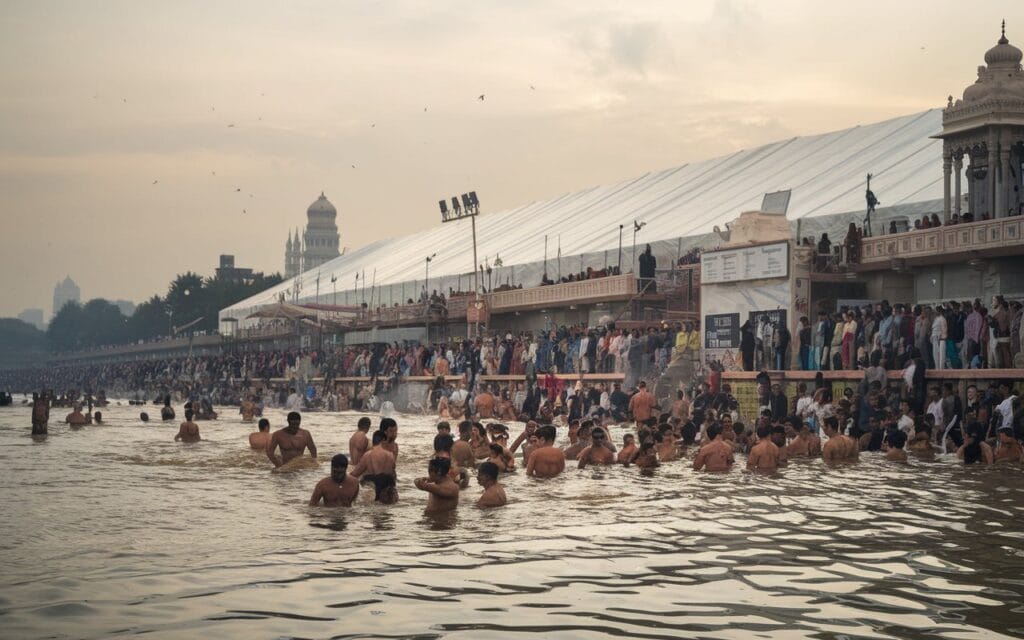
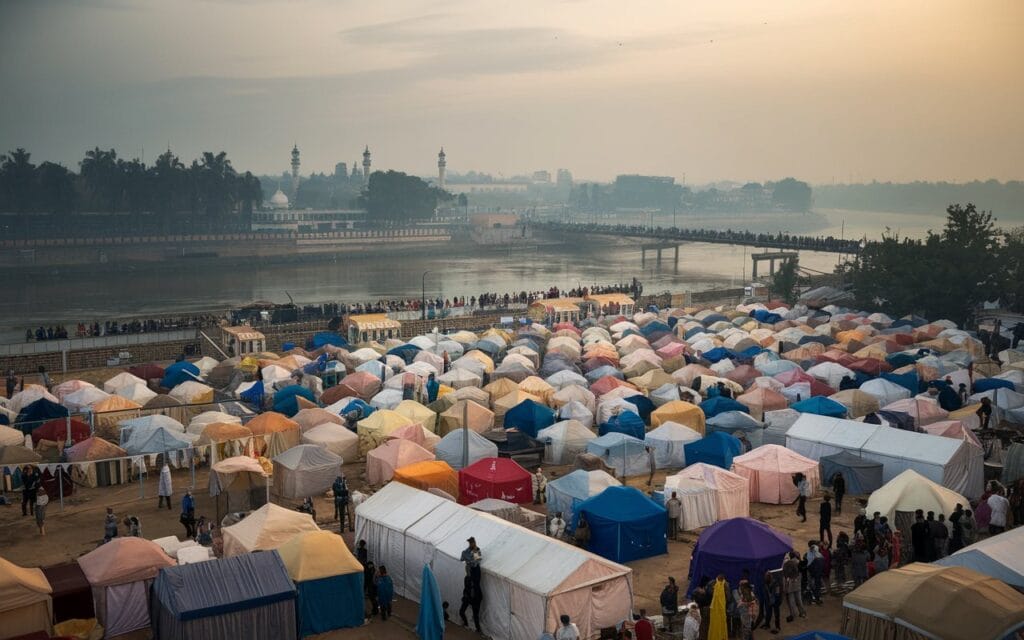
Conclusion: Why the Maha Kumbh Mela 2025 Prayagraj is a Must-See Event
The Maha Kumbh Mela 2025 Prayagraj promises to be a once-in-a-lifetime experience for those who participate in the various activities and attractions during the event. From sacred rituals and cultural performances to the divine Ganga Aarti and the colorful bazaars, the Mela offers something for everyone. Whether you are seeking spiritual growth, cultural immersion, or simply a chance to witness one of the world’s largest gatherings, the Maha Kumbh Mela is an event that is sure to leave an indelible mark on your soul.
Cultural and Religious Activities at the Kumbh Mela
The Maha Kumbh Mela 2025 Prayagraj is not just a religious gathering, but a massive cultural festival that brings together a blend of spirituality, rituals, customs, performances, and a unique atmosphere that cannot be found anywhere else in the world. This once-in-a-lifetime event is a celebration of human faith, cultural diversity, and religious harmony. Whether you are a spiritual seeker or a curious traveler, the Maha Kumbh Mela offers an array of cultural and religious activities that reflect the essence of India’s rich traditions.
In this blog post, we will take you through the various cultural and religious activities that make the Maha Kumbh Mela 2025 Prayagraj an unforgettable experience for every participant. From sacred rituals performed by millions of devotees to mesmerizing cultural performances, here’s what you can expect.
1. The Sacred Ritual of Snan (Holy Bath)
The focal point of the Maha Kumbh Mela is undoubtedly the sacred ritual of Snan or holy bath at the Triveni Sangam, where the Ganga, Yamuna, and mythical Sarasvati rivers meet. The act of taking a dip in these holy waters is believed to cleanse one’s sins, purify the soul, and bestow spiritual merit. Devotees gather from all over the world to participate in this extraordinary purification ritual.
This religious activity is considered one of the most sacred acts of devotion during the Maha Kumbh Mela, with millions taking part in different “snan” (bathing) dates. Some of the most auspicious days of the event, such as the Maha Snan, draw the largest crowds. Devotees gather at the Sangam, some traveling great distances, to immerse themselves in the divine waters and receive blessings. The ritual is performed at sunrise when the first rays of the sun touch the waters, further adding to the spirituality of the moment.
2. Processions and Religious Parades
Religious processions are a significant feature of the Maha Kumbh Mela, showcasing a blend of spirituality, devotion, and spectacle. These processions include groups of ascetics, saints, devotees, and religious leaders who make their way to the Triveni Sangam for their ritual bath.
One of the most striking features is the procession of Naga Sadhus, the Hindu ascetics who walk barefoot through the streets of Prayagraj, adorned in sacred ash (vibhuti) and colorful robes. The sight of these revered monks, who have renounced worldly possessions, is a powerful symbol of renunciation and spiritual discipline. As they march to the Sangam, they lead other groups of pilgrims, priests, and devotees in a grand display of faith and devotion.
In addition to the Naga Sadhus, the Maha Kumbh Mela features processions organized by various religious sects, each having its own rituals, chants, and ceremonies. These processions serve as an opportunity for devotees to come together and celebrate their shared faith.
3. Religious Discourses and Satsangs
The Maha Kumbh Mela 2025 Prayagraj is a hub for spiritual learning and exchange. Religious discourses, satsangs (spiritual gatherings), and teachings are conducted by prominent spiritual leaders and gurus from across India. These gatherings take place in various temples, ashrams, and spiritual camps set up at the Mela grounds. The atmosphere of devotion and learning is palpable as devotees come to listen, reflect, and meditate on the teachings of these spiritual masters.
During the Maha Kumbh Mela, renowned gurus and spiritual leaders from all walks of life conduct talks on Hindu philosophy, the significance of the Kumbh, meditation, and the teachings of ancient texts like the Bhagavad Gita and the Upanishads. These discourses are a key cultural activity, allowing people to deepen their spiritual understanding and engage in meaningful conversations with fellow seekers.
In addition to formal talks, informal satsangs take place throughout the Mela grounds, with individuals gathering in circles for discussions on spiritual topics, chanting mantras, and meditating together. This provides a sense of community and unity, where participants can share experiences, seek guidance, and embark on their spiritual journeys.
4. The Akhara Rituals
The Maha Kumbh Mela is closely associated with the Akharas, the monastic orders of Hindu ascetics who play a pivotal role in the event. These Akharas are home to thousands of monks, sadhus, and devotees who follow particular spiritual traditions. The Akhara rituals are an important cultural and religious activity, offering a glimpse into the traditional practices of Hindu asceticism.
One of the most striking features of the Akharas is the grand procession that takes place on significant days of the Mela. The Naga Sadhus of these Akharas are especially well-known for their display of faith and strength. These ascetics, who practice intense spiritual discipline, are often seen walking through the streets in a state of nakedness, smeared with ash and carrying weapons, symbolizing their renunciation of material life.
Each Akhara organizes its own series of rituals, which may include fire ceremonies, sacred chants, and worship of deities. The presence of these Akharas gives the Maha Kumbh Mela a unique and traditional atmosphere, making it an unforgettable experience for those seeking to understand the ancient practices of Hinduism.
5. Cultural Performances and Folk Art
The Maha Kumbh Mela 2025 Prayagraj is not just a spiritual event; it is also a cultural extravaganza that features a variety of performances showcasing India’s rich cultural diversity. Traditional music, dance, and folk performances from different regions of India add vibrancy to the Mela atmosphere, making it a feast for the senses.
Throughout the Mela grounds, there are various stages and platforms where classical dance forms like Bharatanatyam, Kathak, Kuchipudi, and Odissi are performed. Additionally, folk music performances such as Baul songs, Rajasthani folk music, and traditional devotional songs (bhajans) resonate through the air, creating an immersive cultural experience for all visitors.
Devotees and visitors alike gather to witness these performances, which often reflect the themes of devotion, spirituality, and cultural heritage. Artists from all over India come together to participate in this unique gathering, sharing their music, dance, and storytelling traditions with an audience that is united by the spirit of the Mela.
6. The Ganga Aarti at Triveni Sangam
One of the most awe-inspiring rituals at the Maha Kumbh Mela is the Ganga Aarti, which takes place at the Triveni Sangam every evening. The sacred aarti is a ceremony performed to honor Goddess Ganga, the river deity, and express gratitude for her blessings. The ritual involves the offering of lamps and incense, accompanied by the chanting of sacred mantras and hymns.
As the sun sets and the riverbanks light up with thousands of flickering lamps, the atmosphere becomes charged with a sense of divine energy. Devotees, pilgrims, and tourists gather at the riverbank to witness this magnificent event. The sight of priests performing the aarti with ritualistic precision, while the flames reflect off the waters of the Sangam, is both visually stunning and spiritually uplifting.
The Ganga Aarti at the Maha Kumbh Mela is more than just a religious activity; it is a profound experience that unites everyone present in a collective prayer for peace, prosperity, and divine blessings.
7. Local Traditions and Regional Rituals
One of the most fascinating aspects of the Maha Kumbh Mela is the opportunity to witness the regional rituals and local traditions that vary from one community to another. These traditions reflect the diversity of India’s religious landscape and add depth to the cultural fabric of the Mela.
In addition to the mainstream rituals, local temples and communities often perform their own set of religious ceremonies, which may include special prayers, processions, and rituals that have been passed down through generations. These rituals often incorporate folk traditions, local deities, and regional customs, making the Maha Kumbh Mela a melting pot of cultural and religious practices.
For instance, some temples in Prayagraj conduct unique poojas (worship rituals) for the devotees, such as the Mankameshwar Temple, where people offer prayers for the fulfillment of their desires. Visitors can also find local markets and stalls selling traditional artifacts, handicrafts, and spiritual items, further immersing themselves in the local culture.
8. Yoga and Meditation Camps
A key aspect of the Maha Kumbh Mela 2025 Prayagraj is the presence of numerous yoga and meditation camps where participants can learn, practice, and reflect on the principles of mindfulness and self-awareness. Yoga gurus and spiritual teachers set up camps where they offer free yoga classes, guided meditation sessions, and workshops on spiritual healing.
The emphasis on inner peace, health, and well-being makes the Maha Kumbh Mela not only a place for religious rituals but also a hub for holistic spiritual growth. The peaceful surroundings, combined with the practices of yoga and meditation, offer visitors a chance to connect with themselves and find tranquility amidst the hustle and bustle of the Mela.
9. Traditional Pilgrimage and Parikrama
For many devotees, the Maha Kumbh Mela is also about undertaking the traditional pilgrimage, known as Parikrama, around the Mela grounds and important temples. The act of walking around sacred places while offering prayers is a powerful religious activity that allows pilgrims to seek blessings, show devotion, and purify their souls.
The pilgrimage is considered an essential aspect of the Kumbh experience, and participants often make it a spiritual ritual to walk barefoot around the Mela’s key locations, including the famous temples, the Sangam, and other sacred sites.
10. The Cultural and Spiritual Atmosphere
Ultimately, what makes the Maha Kumbh Mela 2025 Prayagraj truly special is the unique atmosphere it creates—a blend of deep spirituality and vibrant cultural exchange. The Mela grounds are alive with energy, as millions of people gather in a shared commitment to faith, devotion, and cultural celebration.
This fusion of cultural and religious activities allows everyone—regardless of background or belief—to experience the true spirit of unity and human connection. The Maha Kumbh Mela transcends being just an event; it becomes a living testament to the power of culture, religion, and the collective human spirit.
Tips for First-Time Visitors
Attending the Maha Kumbh Mela 2025 in Prayagraj can be a once-in-a-lifetime spiritual experience, but first-time visitors may feel overwhelmed by the sheer scale of the event. Here are some valuable tips to make your journey smoother and more fulfilling:
1.Plan Your Trip Early
The Maha Kumbh Mela attracts millions of pilgrims and tourists from around the globe, leading to crowded accommodations and packed transportation. To avoid last-minute stress, book your lodging and travel tickets well in advance. Look for options closer to the main ghats for easy access to the sacred rituals.
2.Choose the Right Dates
The Maha Kumbh Mela spans several weeks, with specific dates designated for holy bathing, also known as Shahi Snan. These days witness a massive influx of devotees, so plan your visit around these dates if you wish to participate in the most auspicious rituals. However, if you prefer a less crowded experience, consider visiting during off-peak days.
3.Dress Modestly and Comfortably
Modesty is essential at this spiritual gathering. Opt for traditional Indian attire or simple clothing that covers your body adequately. Comfortable footwear is a must, as you’ll be walking long distances across uneven terrain.
4.Stay Hydrated and Pack Essentials
Carry a water bottle, energy snacks, and essential medications. The weather in Prayagraj during January can be unpredictable, so pack layers to stay warm during chilly mornings and evenings. Don’t forget items like sunscreen, hats, and hand sanitizers.
5.Be Prepared for Crowds
The Maha Kumbh Mela is known for its vibrant chaos. Stay patient and mindful of the crowds, especially near the bathing ghats. Stick to your group, and establish a meeting point in case you get separated.
6.Respect the Rituals and Customs
The Maha Kumbh Mela is deeply rooted in Hindu traditions. Show respect by following the guidelines, avoiding photography in sensitive areas, and listening to local authorities and volunteers.
7.Explore Beyond the Ghats
While the bathing rituals are the highlight of the Maha Kumbh Mela, don’t miss the cultural events, spiritual discourses, and performances by sadhus and artists. These add to the mystical experience of the event.
8.Stay Safe
Keep your belongings secure, avoid carrying large amounts of cash, and beware of pickpockets. Additionally, follow the instructions of security personnel and avoid restricted areas.
By keeping these tips in mind, your visit to the Maha Kumbh Mela 2025 will be a memorable and spiritually enriching experience.
FAQs
About Maha Kumbh Mela 2025 Prayagraj
The Maha Kumbh Mela is one of the largest spiritual gatherings in the world, celebrated every 12 years. Millions of devotees come together to take a holy dip in the sacred rivers, seeking purification of their sins and spiritual awakening.
The Maha Kumbh Mela 2025 will take place in Prayagraj (formerly Allahabad) from January to March 2025. The exact dates for the holy bathing days (Shahi Snan) will be announced closer to the event.
The Maha Kumbh Mela is held in rotation across four locations in India: Prayagraj, Haridwar, Ujjain, and Nashik. In 2025, it will be hosted in Prayagraj, at the confluence of the Ganga, Yamuna, and the mythical Saraswati rivers, known as the Triveni Sangam.
The Maha Kumbh Mela holds immense spiritual and cultural importance in Hinduism. It is believed that bathing in the holy rivers during the Kumbh Mela cleanses one’s sins and paves the way for salvation.
Prayagraj is well-connected by road, rail, and air. The Prayagraj Junction railway station and Bamrauli Airport are the main transit hubs. Special trains and buses are also organized for pilgrims during the Maha Kumbh Mela.
Pack light but include essentials such as warm clothing (for January mornings and evenings), comfortable footwear, water bottles, sunscreen, and basic first-aid supplies. A portable charger and waterproof bags can also be helpful.
How to Reach Prayagraj for the Maha Kumbh Mela
The Maha Kumbh Mela 2025 in Prayagraj is set to attract millions of pilgrims and visitors from across India and the world. Reaching this holy city during the event requires careful planning due to the immense crowd and increased demand for transport. Here’s a detailed guide on how to get to Prayagraj:
By Air✈
The fastest way to reach Prayagraj is by air. The Bamrauli Airport (Prayagraj Airport) is the closest airport, located approximately 12 kilometers from the city center. It operates regular flights from major cities like Delhi, Mumbai, Bangalore, and Kolkata. During the Maha Kumbh Mela, additional flights may be scheduled to accommodate the influx of pilgrims. From the airport, you can hire taxis or use shuttle services provided for the event.
By Train🚂
Prayagraj is a major railway hub, with Prayagraj Junction (formerly Allahabad Junction) being the primary station. It is well-connected to all parts of India through an extensive rail network. Special trains and additional coaches are usually introduced during the Maha Kumbh Mela to manage the surge of visitors. Popular trains include the Prayagraj Express, Duronto Express, and Vande Bharat Express. It’s advisable to book your tickets early to avoid last-minute hassles.
By Road🛣🚗
Prayagraj is accessible via a network of national and state highways. The city is connected to major nearby cities like Varanasi (120 km), Lucknow (200 km), and Kanpur (200 km). Several state-run and private buses, including deluxe and sleeper options, operate during the Maha Kumbh Mela. Alternatively, you can drive your own vehicle or hire a taxi for a more personalized experience.
By Water⛴⚓
For a unique travel experience, consider reaching Prayagraj by river. The National Waterways Project allows for boat services along the Ganga River. This mode of transport is not only serene but also a spiritual journey, as you approach the holy Triveni Sangam by water.
Local Transport in Prayagraj🛺
Once you reach Prayagraj, getting around during the Maha Kumbh Mela can be challenging due to the crowds. The local authorities provide special shuttle buses, e-rickshaws, and shared autos to ferry pilgrims to key locations like the Triveni Sangam and bathing ghats. Walking may also be necessary in crowded zones.
Tips for Traveling to Prayagraj During the Maha Kumbh Mela
- Book Early: Whether you’re traveling by air, train, or road, make your bookings as early as possible to secure your spot.
- Travel Light: Due to heavy crowds, carrying minimal luggage will make your journey more comfortable.
- Stay Updated: Check for updates on transport schedules, traffic diversions, and weather conditions.
- Use Official Services: Rely on government-approved transport services to ensure safety and reliability.
By planning your journey carefully, you can make the most of your visit to the Maha Kumbh Mela 2025 in Prayagraj and experience this grand spiritual event without stress.
Accommodation Options for Travelers
Finding the right place to stay during the Maha Kumbh Mela 2025 in Prayagraj is crucial for ensuring a comfortable and hassle-free experience. With millions of pilgrims and visitors attending this grand event, a wide range of accommodations are made available to cater to diverse budgets and preferences. Here’s a detailed guide to the accommodation options you can explore:
1. Hotels🏨
Prayagraj has numerous hotels ranging from budget-friendly options to luxury establishments. During the Maha Kumbh Mela, many hotels offer special packages for pilgrims. If you’re looking for convenience and modern amenities, staying in a hotel near the city center or close to the main ghats is ideal. However, due to high demand, early booking is highly recommended.
Best 3 Hotels🏨
2. Dharamshalas and Ashrams
For those seeking a more spiritual or budget-friendly stay, dharamshalas and ashrams are excellent options. These accommodations are often located close to temples and the Triveni Sangam. While the amenities may be basic, the atmosphere is peaceful and ideal for spiritual seekers attending the Maha Kumbh Mela.
3. Tented Camps⛺
Tented accommodations are one of the most popular choices during the Maha Kumbh Mela. These camps are set up near the banks of the Ganga and offer a unique experience of living amidst the spiritual energy of the mela. Options range from basic tents with shared facilities to luxury tents with en-suite bathrooms and dining areas. Many camps also organize cultural programs and guided tours of the mela.
4. Government-Run Accommodations
The government of Uttar Pradesh makes special arrangements for visitors during the Maha Kumbh Mela. Temporary shelters, known as Kumbh Nagars, are set up in and around Prayagraj, offering affordable lodging to pilgrims. These accommodations may include basic dormitories and shared facilities, making them a cost-effective choice.
5. Guesthouses and Homestays
Guesthouses and homestays provide a comfortable, home-like environment for travelers. These accommodations allow you to experience the local culture and hospitality of Prayagraj. Homestays are particularly suitable for families or small groups looking for privacy and personalized attention.
6. Camping by the Riverside🏕🏞
For an adventurous experience, you can opt for riverside camping. Many private operators provide camping facilities near the Triveni Sangam, allowing you to stay close to the main rituals and ceremonies. Ensure you choose a reputed provider to guarantee safety and comfort.
Tips for Booking Accommodation During the Maha Kumbh Mela
- Book Early: With millions of visitors expected, accommodations fill up quickly. Secure your booking several months in advance.
- Check Amenities: Depending on your preferences, confirm the availability of facilities such as hot water, Wi-Fi, and meals.
- Stay Close to the Ghats: If participating in the Shahi Snan is a priority, choose accommodations near the ghats to save travel time.
- Verify Authenticity: Book through official channels or trusted platforms to avoid fraud.
- Budget Accordingly: Prices may vary significantly based on proximity to the mela grounds and the level of comfort offered.
By choosing the right accommodation, your visit to the Maha Kumbh Mela 2025 in Prayagraj can be a spiritually enriching and comfortable experience.
Safety and Health Guidelines for Pilgrims
The Maha Kumbh Mela 2025 in Prayagraj is a grand spiritual gathering that attracts millions of pilgrims from around the world. While the event is a profound and transformative experience, ensuring your safety and health during the mela is essential due to the immense crowds and long durations of participation. Here are some key guidelines to keep in mind:
1. Stay Hydrated
With the large number of activities and significant walking involved, it’s easy to get dehydrated. Carry a reusable water bottle and drink clean water frequently. Avoid consuming water from unverified sources to prevent waterborne illnesses.
2. Wear Comfortable Clothing and Footwear
Dress modestly and comfortably for long hours of walking and standing. Opt for lightweight, breathable fabrics and sturdy footwear to navigate the uneven terrain of the mela grounds.
3. Protect Yourself from Weather Conditions
January mornings and evenings in Prayagraj can be chilly, while afternoons might be warmer. Dress in layers to adapt to changing temperatures and carry a hat or scarf for sun protection. Sunscreen is also recommended to prevent sunburn.
4. Practice Good Hygiene
Maintaining hygiene is crucial during the Maha Kumbh Mela. Carry hand sanitizers, wet wipes, and tissues, as public facilities may be crowded. Wash your hands regularly, especially before eating, and avoid consuming food from unhygienic stalls.
5. Be Mindful of Crowds
The Maha Kumbh Mela can get overwhelmingly crowded, particularly on Shahi Snan days. Stay close to your group, establish a meeting point in case of separation, and avoid pushing or rushing in packed areas.
6. Secure Your Belongings
Pickpocketing can occur in densely populated areas. Keep your valuables such as wallets, phones, and important documents secure in a money belt or a crossbody bag. Avoid carrying excessive cash or wearing expensive jewelry.
7. Follow Safety Instructions
Listen to announcements and follow the guidelines set by authorities and event organizers. Stick to designated paths and avoid restricted areas to ensure your safety.
8. Seek Medical Assistance When Needed
Temporary medical camps and first-aid stations are set up throughout the mela grounds. If you feel unwell, seek help immediately. It’s a good idea to carry a basic first-aid kit with essential medications for headaches, fever, and stomach issues.
9. Respect Local Customs and Traditions
The Maha Kumbh Mela is a deeply spiritual event. Show respect for rituals, sadhus, and other pilgrims. Avoid disrupting ceremonies or capturing photographs where it’s prohibited.
10. Prepare for Long Walks and Queues
Be patient and mentally prepared for long queues at the ghats and other key locations. Carry a lightweight backpack with essentials like water, snacks, and a portable seating mat.
11. Stay Updated on Emergency Protocols
Familiarize yourself with emergency exits, help centers, and police stations within the mela area. Save the helpline numbers provided by the authorities for quick assistance if needed.
By following these safety and health guidelines, you can ensure a smooth and enriching experience at the Maha Kumbh Mela 2025 in Prayagraj. Staying mindful and prepared will allow you to focus on the spiritual significance of this once-in-a-lifetime event.
The Ritual Bath at the Sangam: What You Need to Know
One of the most sacred and awaited rituals of the Maha Kumbh Mela is the holy bath at the Triveni Sangam in Prayagraj. The Sangam, the confluence of three rivers—the Ganga, Yamuna, and the mythical Saraswati—is believed to be a site of immense spiritual energy. Taking a dip here during the Maha Kumbh Mela 2025 is considered a way to purify one’s soul and attain liberation. Here’s everything you need to know about this revered ritual:
1. The Significance of the Ritual Bath
According to Hindu beliefs, bathing at the Sangam during the Maha Kumbh Mela washes away sins and grants spiritual merit. The act symbolizes a journey towards self-purification and liberation from the cycle of rebirth. The Sangam holds special significance as it is said to be blessed with divine nectar (amrit) during this auspicious time.
2. Auspicious Bathing Dates (Shahi Snan)
Certain days during the Maha Kumbh Mela are designated as Shahi Snan (Royal Bath) days, when saints, sadhus, and pilgrims bathe in a grand procession. These dates are considered the most auspicious for taking a dip. The Shahi Snan is a sight to behold, with colorful processions of Akharas (monastic orders) and spiritual leaders making their way to the river.
3. How to Prepare for the Ritual Bath
- Arrive Early: The ghats are most crowded during the mornings and Shahi Snan days, so arrive early to secure your spot.
- Wear Modest Clothing: Dress in simple, modest attire that you can comfortably bathe in. Many pilgrims wear traditional white garments.
- Carry Essentials: Bring a towel, a change of clothes, and a small bag to store your belongings. Waterproof pouches are useful for carrying valuables like phones and wallets.
4. The Process of the Ritual Bath
Before entering the water, many pilgrims offer prayers and perform rituals such as lighting diyas (lamps) or offering flowers to the river. Enter the water with devotion, immerse yourself fully, and chant prayers or mantras. Some pilgrims also collect small bottles of the holy water to take home as blessings.
5. Safety Tips for Bathing
- Follow Designated Zones: The organizers set up specific areas for bathing to ensure safety. Always stick to these zones.
- Avoid Deep Waters: The currents at the Sangam can be strong. Stay close to the shore and follow the instructions of lifeguards and volunteers.
- Be Mindful of Belongings: Crowds can be overwhelming, so keep your belongings secure and close to you at all times.
6. The Spiritual Atmosphere
The Sangam during the Maha Kumbh Mela is a deeply spiritual space. The chants of devotees, the aroma of incense, and the sight of diyas floating on the river create an atmosphere of devotion and tranquility. Witnessing or participating in this sacred ritual can be a transformative experience.
7. Things to Remember
- Respect the sanctity of the ritual and avoid any disruptive behavior.
- Be patient, as the large crowds may cause delays.
- Take time to absorb the spiritual energy of the Sangam and reflect on its significance.
Taking a dip at the Sangam during the Maha Kumbh Mela 2025 is more than just a ritual—it’s an opportunity to connect with the divine and be part of a tradition that has been celebrated for centuries. By approaching it with reverence and preparation, you can make this experience truly memorable.
A Photographer’s Paradise: Capturing the Maha Kumbh
The Maha Kumbh Mela 2025 in Prayagraj is not only a spiritual marvel but also a visual feast for photographers. With its vibrant colors, diverse cultures, and profound rituals, the mela offers countless opportunities to capture breathtaking moments. Whether you’re an amateur or a seasoned photographer, the Maha Kumbh is a once-in-a-lifetime experience to document humanity’s largest congregation. Here’s how you can make the most of this photographer’s paradise:
1. The Vibrant Subjects of the Maha Kumbh
The Maha Kumbh Mela brings together people from all walks of life. From the ascetic Naga sadhus with ash-covered bodies to pilgrims draped in colorful attire, every frame tells a story. The Shahi Snan processions, spiritual gatherings, and cultural performances provide dynamic and varied subjects to capture.
2. Iconic Locations to Photograph
- Triveni Sangam: The confluence of the Ganga, Yamuna, and Saraswati is a central attraction. Capturing the moment when devotees take a holy dip is both challenging and rewarding.
- Akharas and Camps: Visit the camps of sadhus and spiritual leaders, where you can photograph rituals, fire ceremonies, and the unique lifestyles of these ascetics.
- Crowd Shots: The vast sea of humanity at the mela showcases the scale of this spiritual event. Aerial or elevated shots can help capture the enormity of the gathering.
- Floating Diyas: Evening scenes of devotees setting diyas afloat on the river create magical frames.
3. Golden Hours for Photography
The best time to photograph the Maha Kumbh Mela is during the golden hours—just after sunrise and before sunset. The soft, warm light enhances the vibrancy of the mela and adds depth to your shots. Early mornings are also ideal for capturing rituals in progress with minimal interference.
4. Essential Gear to Carry
- Camera: A DSLR or mirrorless camera is ideal for versatile shooting.
- Lenses: A wide-angle lens is perfect for crowd shots, while a zoom lens lets you capture portraits and candid moments from a distance.
- Tripod: Useful for night photography and capturing stable shots of rituals.
- Extra Batteries and Memory Cards: With so much happening, you’ll need ample storage and power.
5. Tips for Capturing the Maha Kumbh
- Respect Privacy: Always seek permission before taking close-up portraits, especially of sadhus or individuals in deep prayer.
- Tell a Story: Try to capture sequences that narrate the journey of pilgrims, from their arrival to their spiritual rituals.
- Experiment with Angles: Get creative by shooting from low angles, using reflections, or framing subjects through natural elements like arches or ghats.
- Use Natural Light: The ambient light during the Maha Kumbh is often dramatic. Make use of it to create powerful images.
6. Challenges to Be Aware Of
- Crowds: Navigating through massive crowds can make setting up shots difficult. Plan your positions in advance for major events like the Shahi Snan.
- Dust and Water: Protect your camera gear with weatherproof covers and cleaning tools to manage the dusty environment and splashes near the ghats.
- Time Constraints: With so much happening simultaneously, prioritize what you want to capture to avoid missing key moments.
7. Preserving the Spirit of the Maha Kumbh
While capturing the Maha Kumbh Mela, remember that this is a deeply spiritual event for millions of people. Be respectful and avoid intrusive or disruptive behavior. Focus on showcasing the beauty, devotion, and unity of this grand gathering.
8. Sharing Your Work
After the event, your photographs can serve as a powerful medium to share the essence of the Maha Kumbh with the world. Consider creating a photo essay, sharing your work on social media, or even publishing a book to inspire others with your visual storytelling.
The Maha Kumbh Mela 2025 is a photographer’s dream come true, offering endless opportunities to capture moments of devotion, culture, and humanity. With the right preparation and a keen eye, you can create images that not only stand out but also honor the spirit of this extraordinary event.
FAQs
About Maha Kumbh Mela 2025 Prayagraj
Yes, a variety of accommodations are available, including hotels, dharamshalas, tents, and guest houses. However, due to the large crowds, it is advisable to book your stay well in advance.
Yes, the event is generally safe, but solo travelers should exercise caution, especially in crowded areas. Stick to designated zones, keep your valuables secure, and avoid venturing out alone late at night.
Absolutely! The Maha Kumbh Mela welcomes people from all religions and backgrounds to witness its grandeur and spiritual essence.
The main ritual is the Shahi Snan (royal bath) in the Triveni Sangam. Other rituals include spiritual discourses, aartis, and processions by sadhus and saints.
Yes, the government and organizers provide special facilities like priority access, medical aid, and wheelchair assistance for senior citizens and differently-abled individuals.
Plan your trip well, respect the local customs, participate in the rituals, and explore the cultural events beyond the ghats. Staying organized and patient will help you fully embrace the spiritual energy of the Maha Kumbh Mela.

